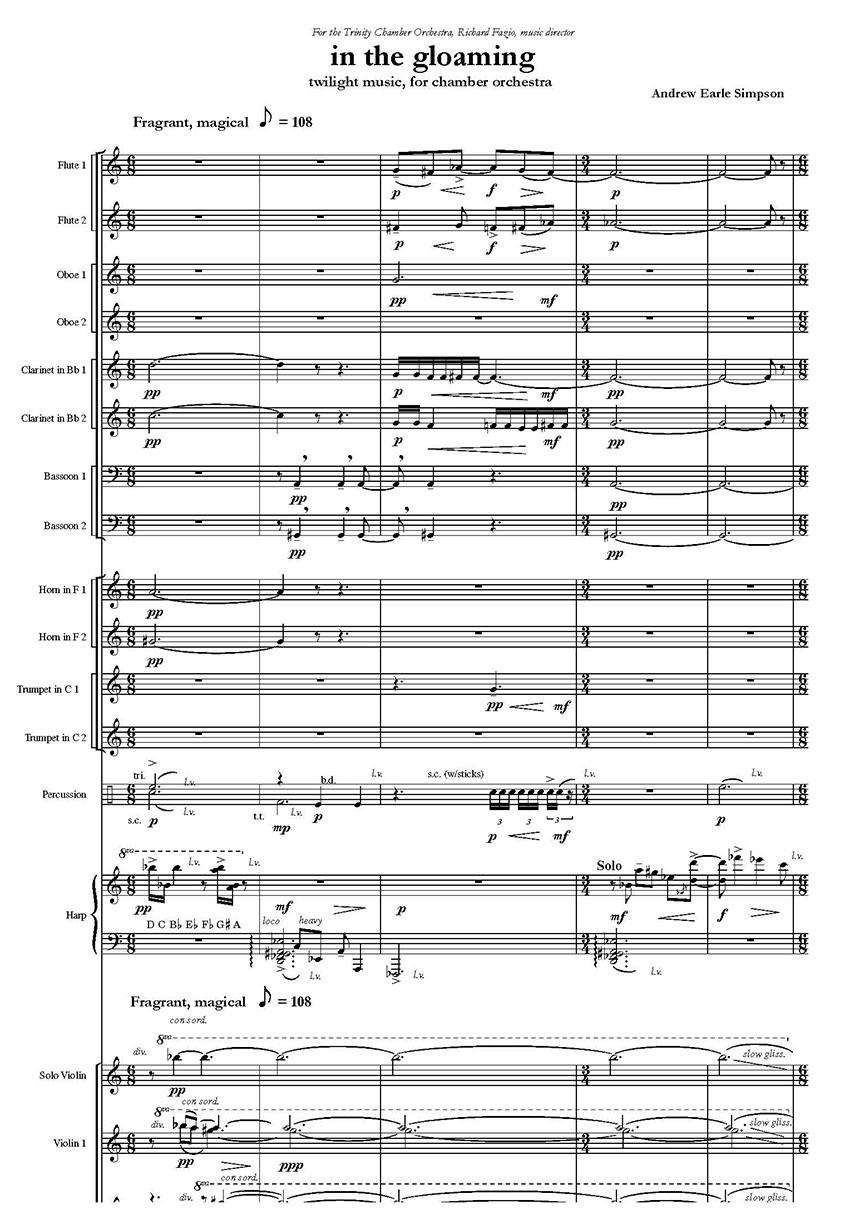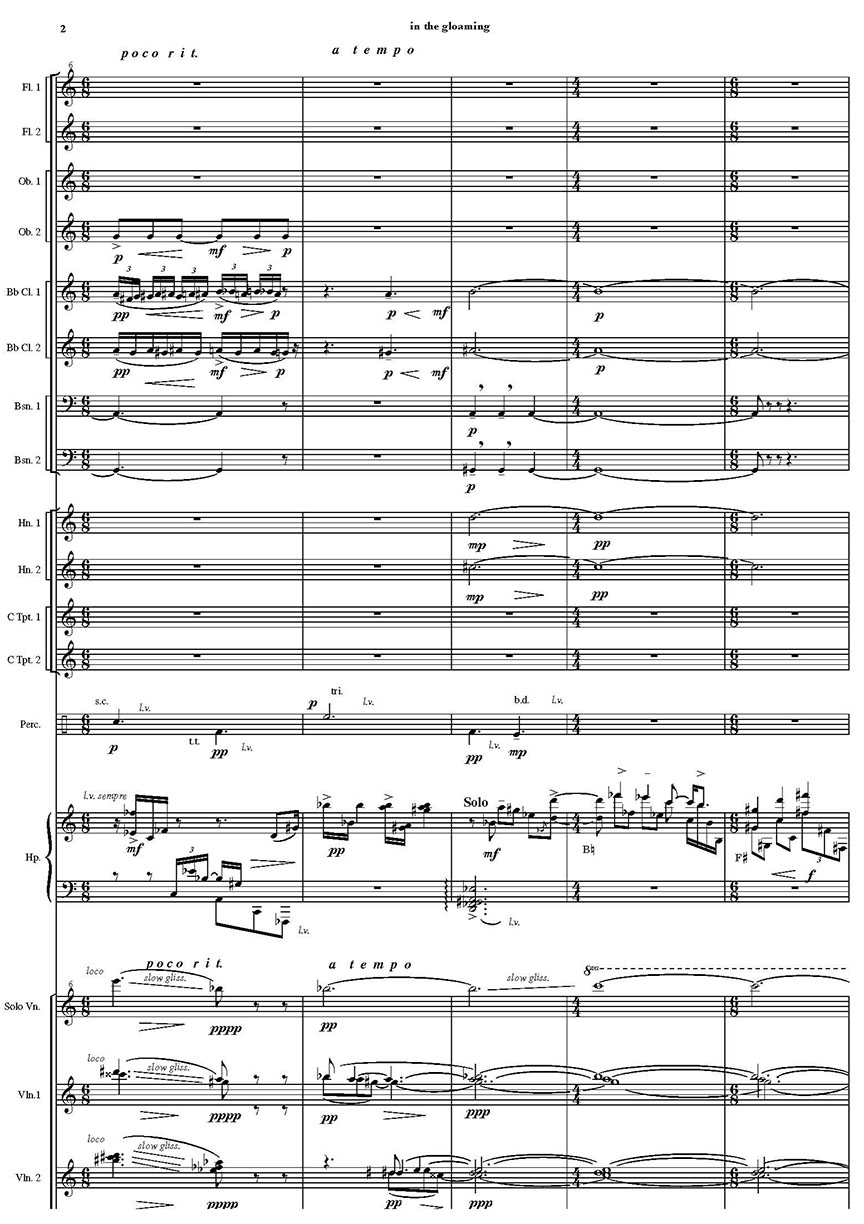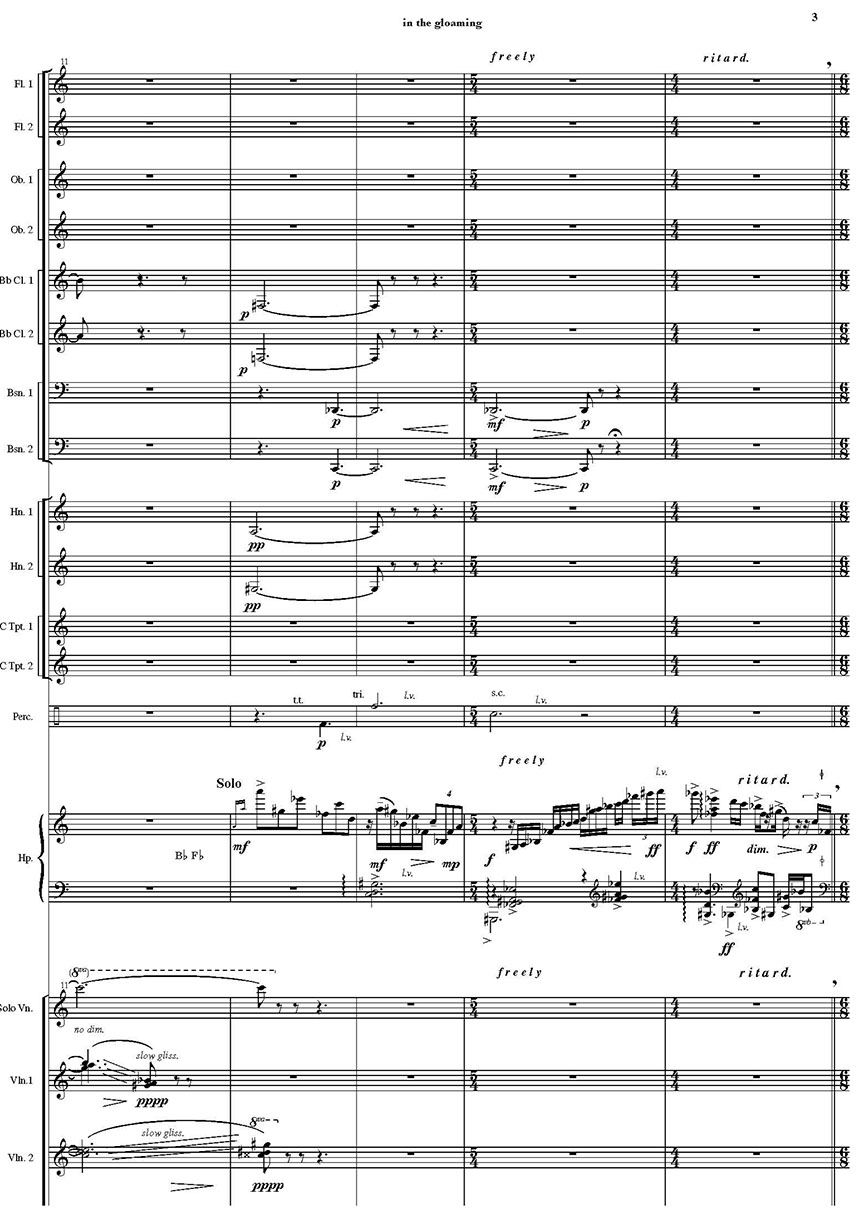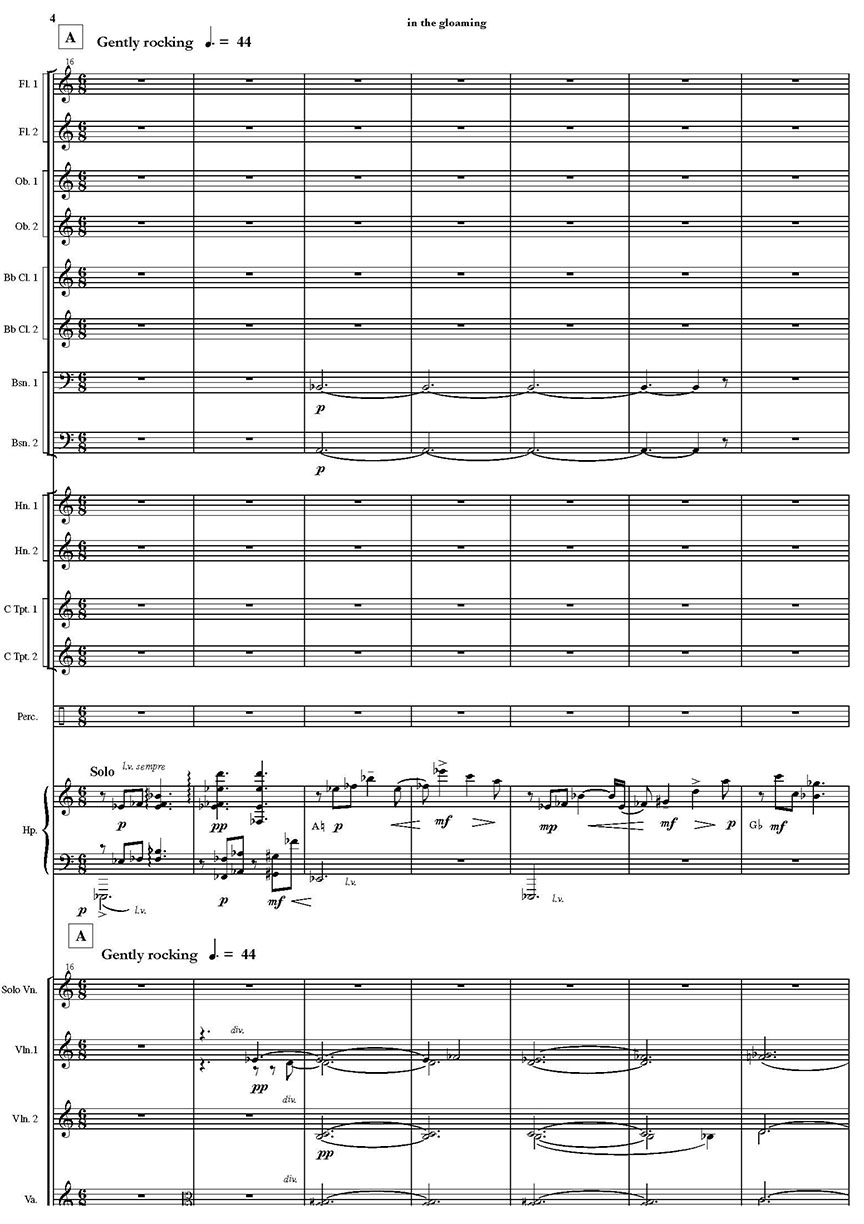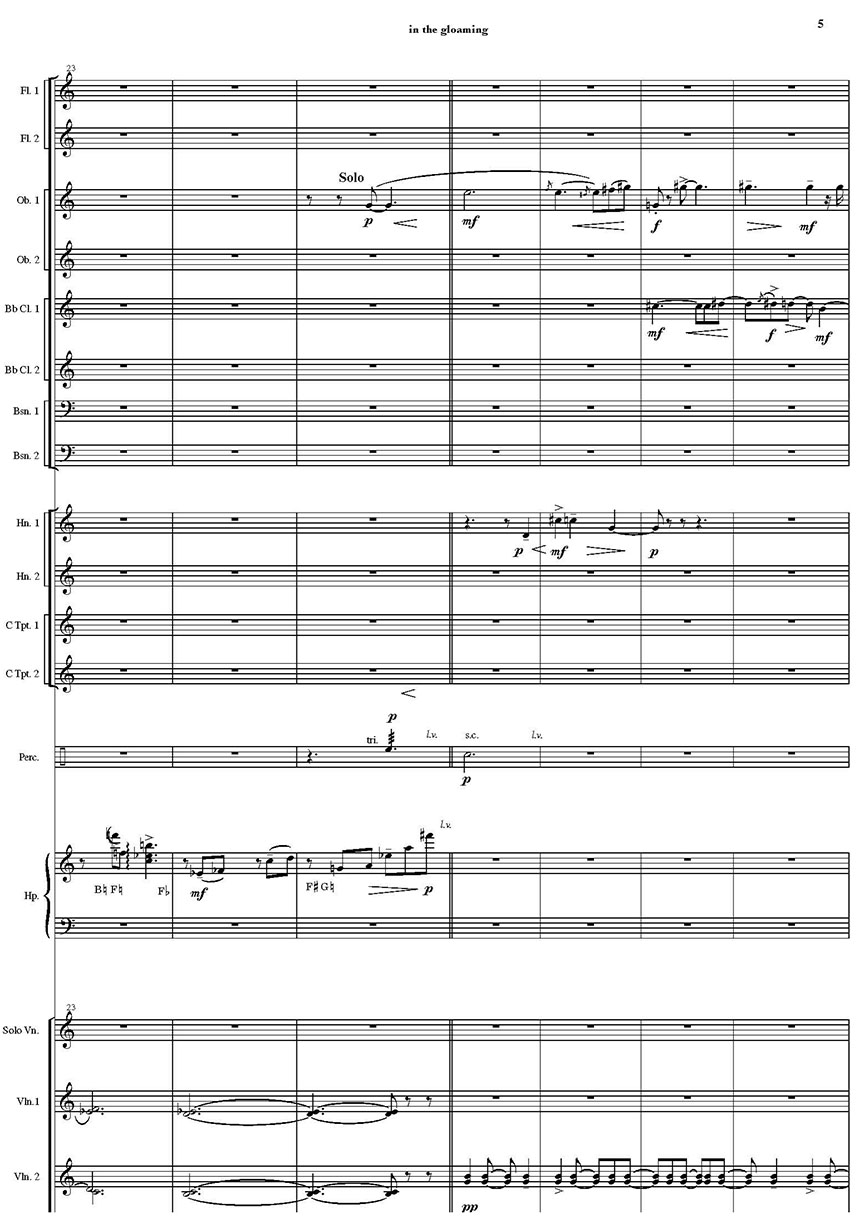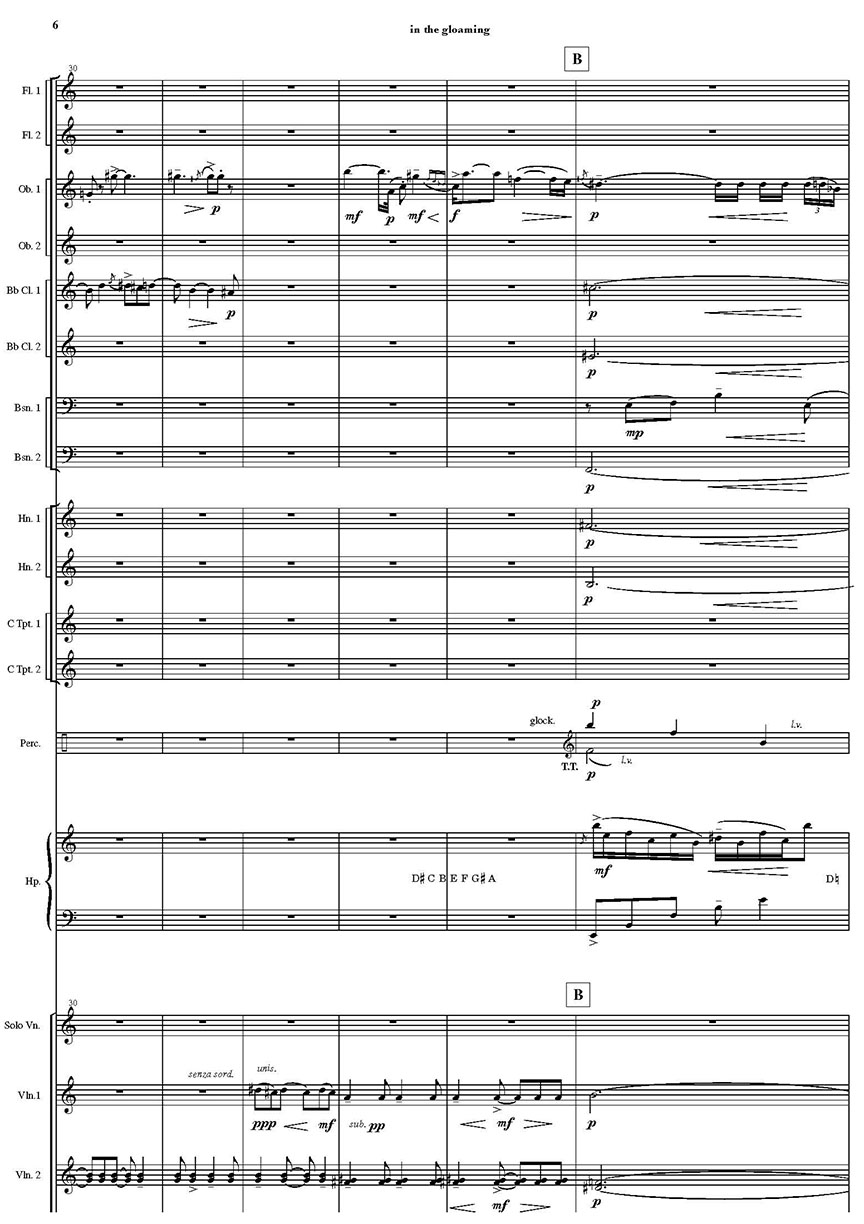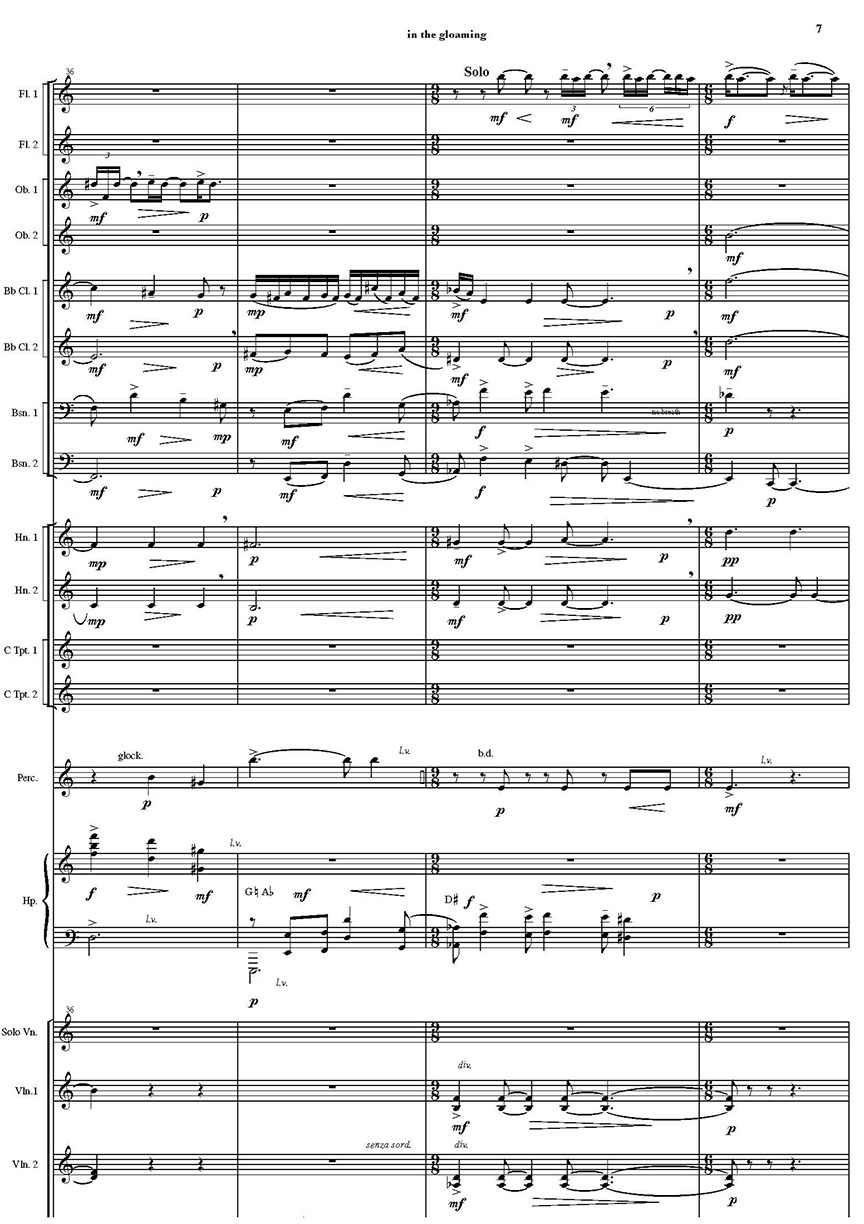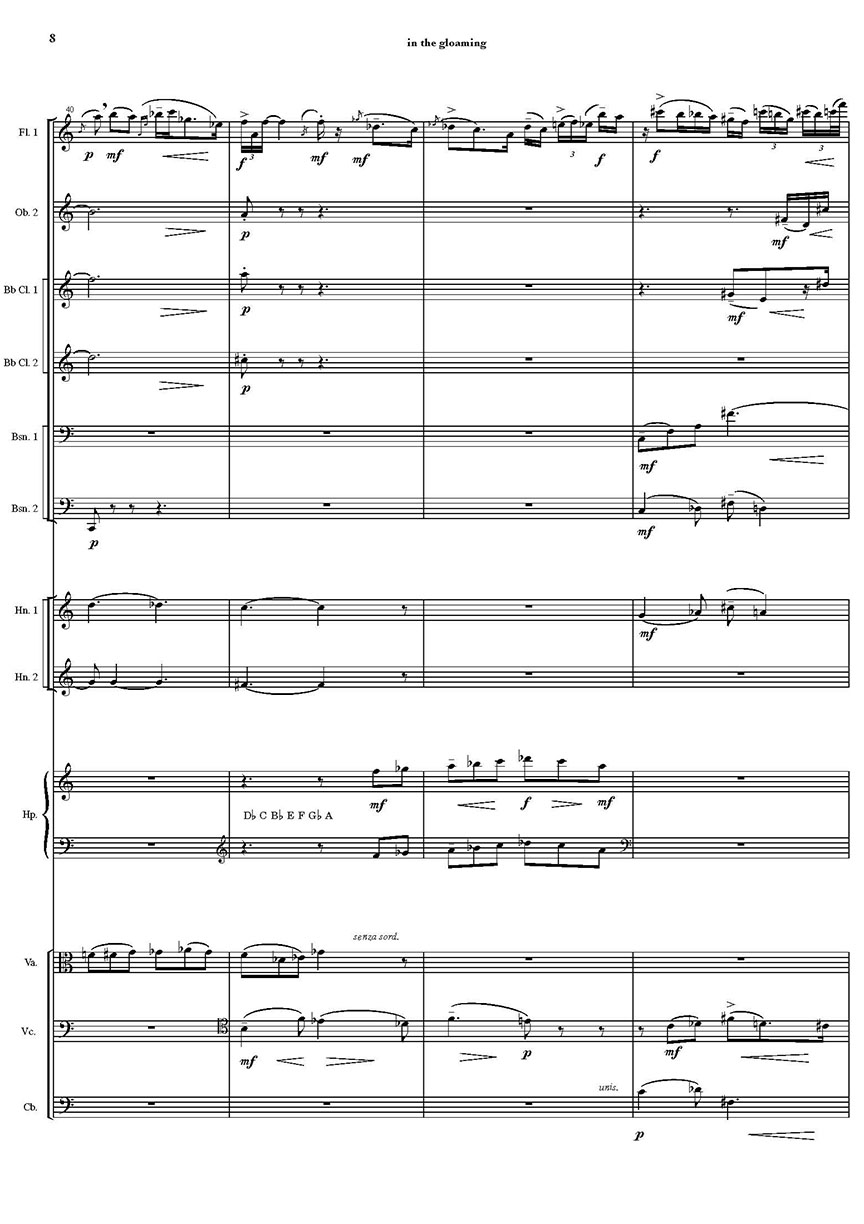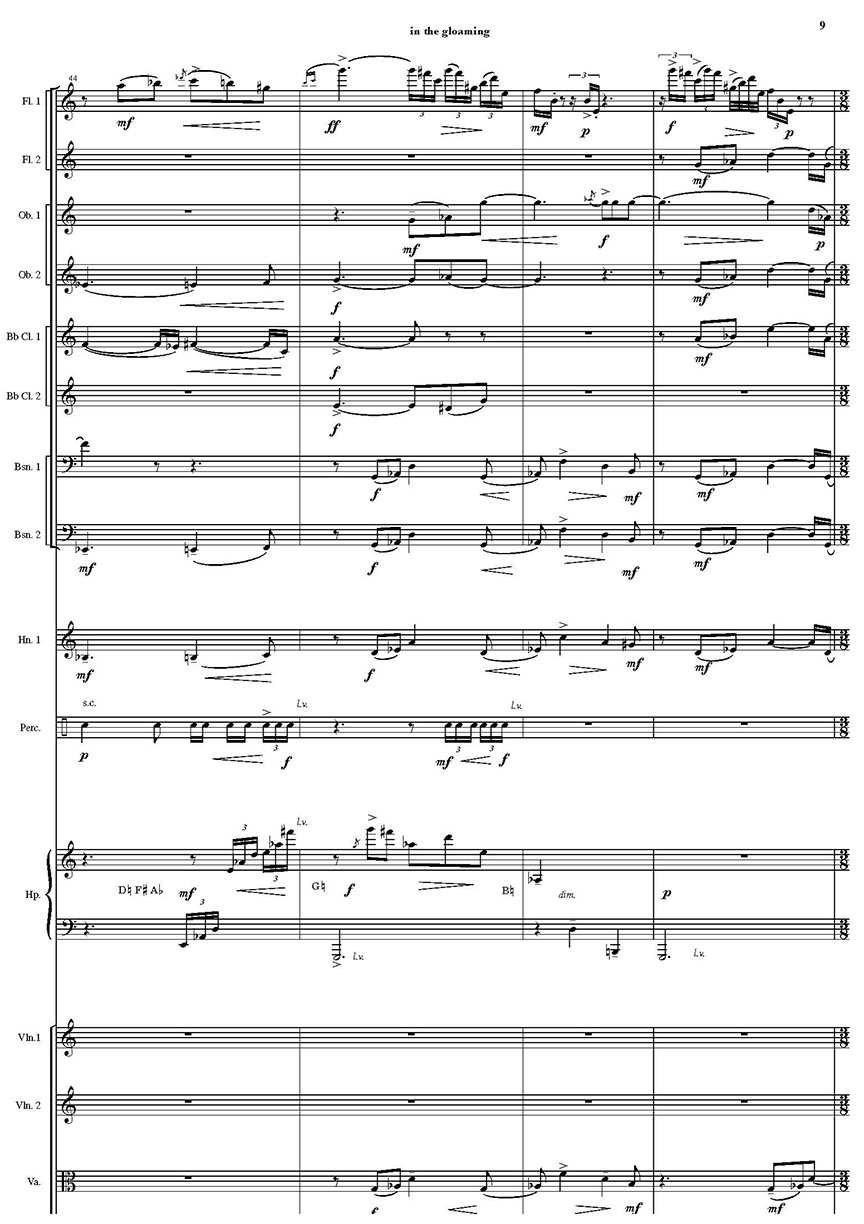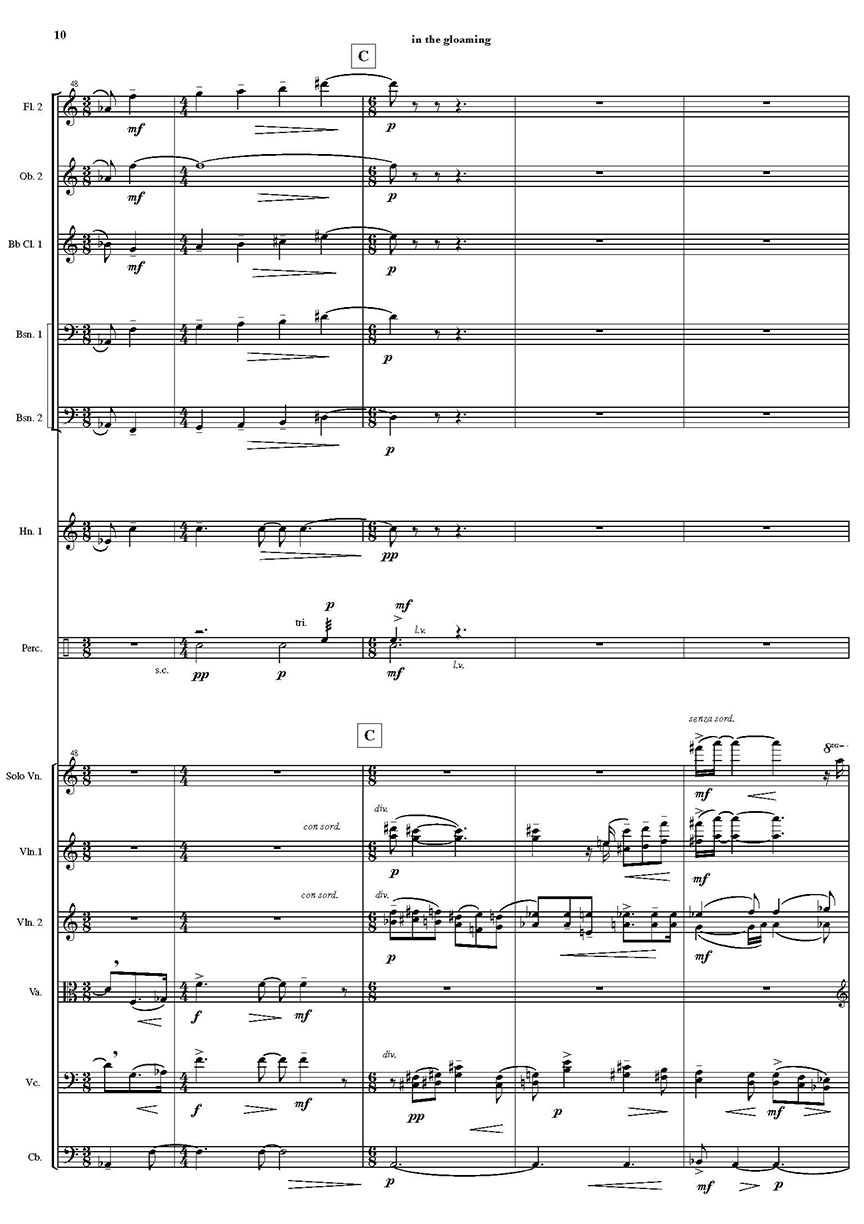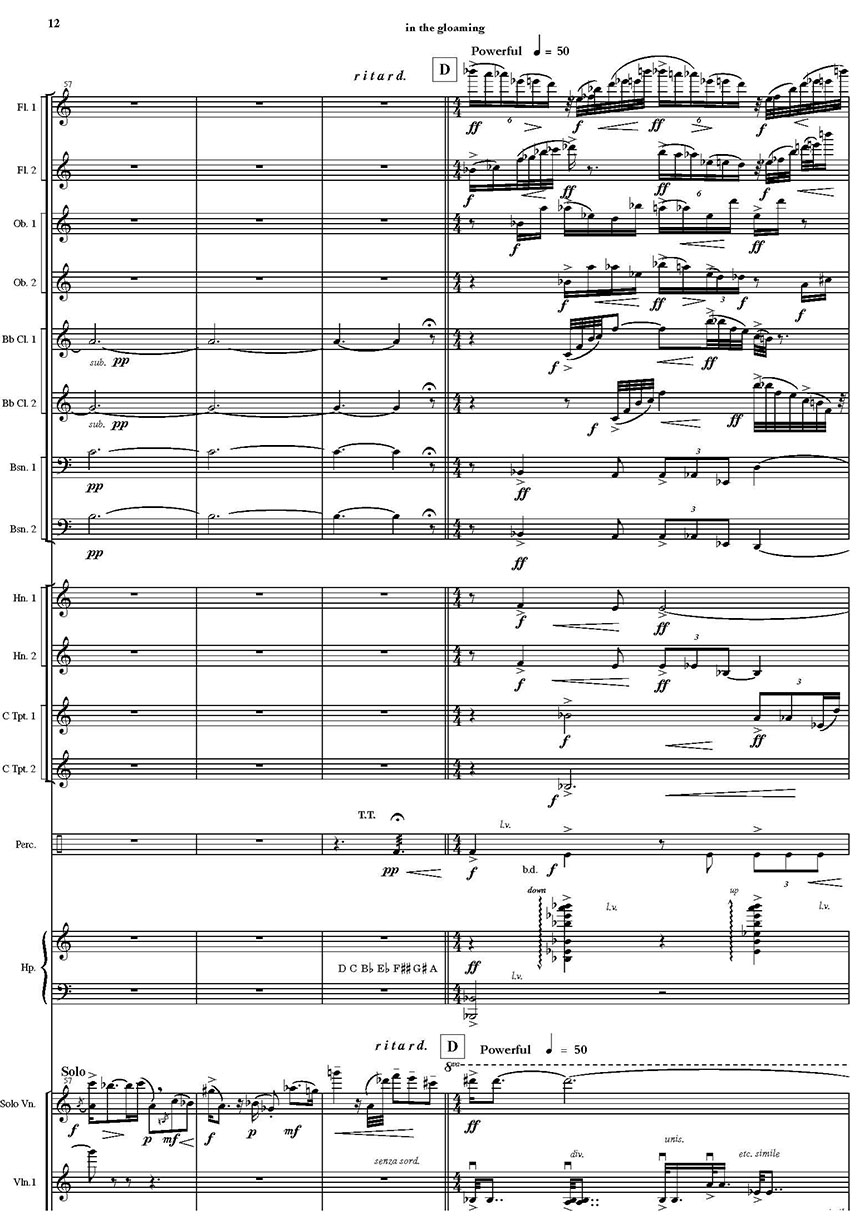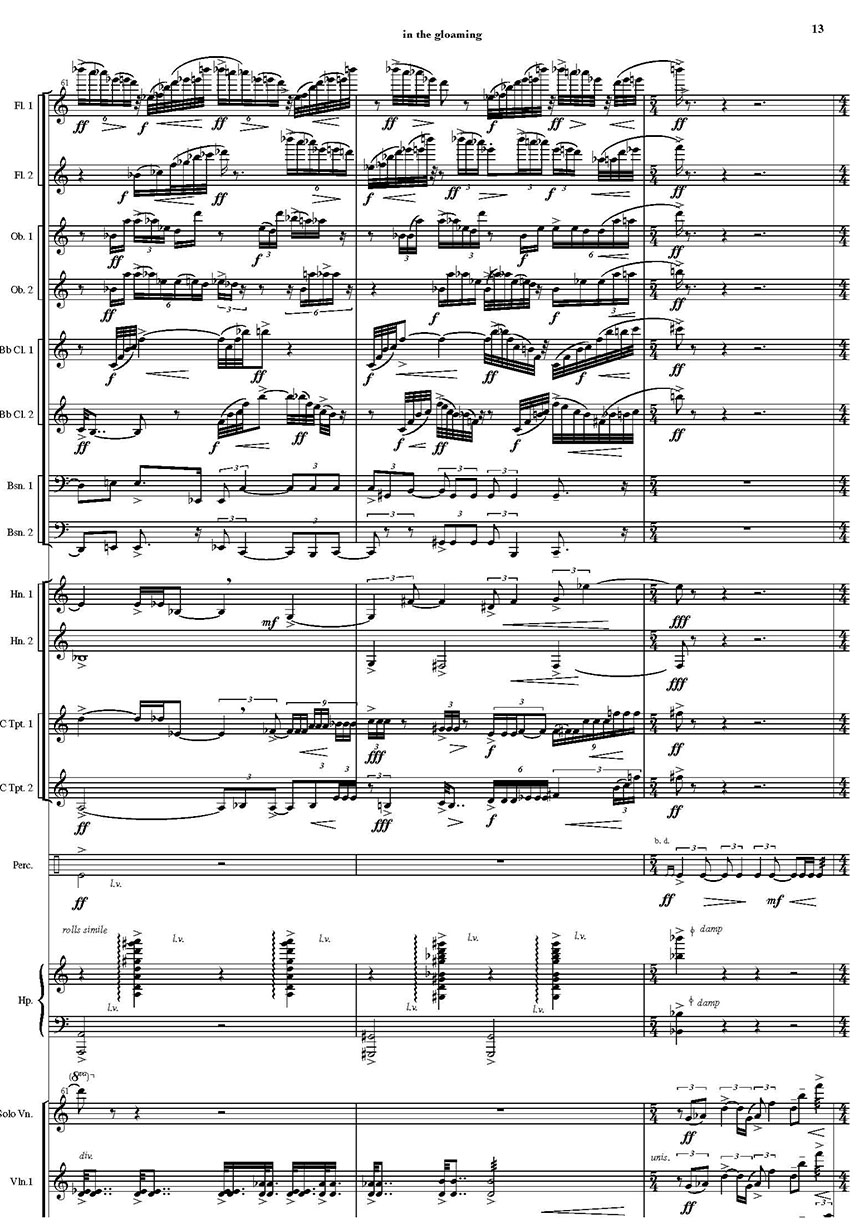in the gloaming: twilight music for chamber orchestra (2001)
for orchestra, 12 minutes
Instrumentation
2222/2200/hp/solo vn/strings
This work is excerpted from the middle section of the earlier tone poem Petruchio, premiered by the Trinity Chamber Orchestra (Richard Fazio, conductor) in Washington, DC, in 2001.
Listen
Opening
Program Notes
in the gloaming, for chamber orchestra, takes much of its material from a previous orchestral work of mine, Petruchio, a tone poem for full orchestra, premiered in 1998. This work is, nonetheless, a fully new work for smaller forces, employing the melodic material of the earlier piece.
Like the earlier work, in the gloaming is a piece which evokes extra-musical content: that is, ideas or images which are not strictly musical. The subtitle of this piece, “twilight music,” gives a clue to the extra-musical image involved. The word “gloaming” is derived from an Old English word which means “dusk” or “twilight”; the Old English verb to which “gloaming” is related, glowan, means “to glow.” It is this sense of the word which I find most intriguing: the idea that, even in the fading daylight of dusk, there is still somehow an aura of glowing, of luminescence, in the air. I have always found twilight to be a magical time of day, particularly in summer, when the air is fragrant with flowers and trees, and the sounds of locusts and cicadas send aloft their raucous, hypnotic waves of sound.
These extra-musical ideas and images inform the music, but they do not direct its course. In the same way, the music does not attempt to describe anything in particular, such as cicadas, but simply to evoke it. in the gloaming can be described as a tone poem: a piece of music with poetic or extra-musical connotations which add to the overall artistic statement of that piece. However, as with many tone poems, the narrative of this piece is strictly musical; there is no underlying story or “program” involved. There are many masterpieces which do follow a very specific program, Berlioz’ Symphonie Fantastique being perhaps the most famous example. Richard Strauss’ tone poem Don Juan has a less clearly delineated program, but the Don Juan story can be approximately discerned in the course of the music. It has been fashionable in recent years for composers to eschew any extra-musical ideas in pieces of theirs which may have extra-musical titles; saying, in effect, that the music stands on its own without any external “props”. Though it is true that a piece must succeed on its purely musical merits, it also seems that a story, poem, image, or idea which a composer might attach to a piece is meant therefore to become part of the total artistic statement of the piece. Thus, an important element is missing if extra-musical ideas are left out of consideration. The listener, therefore, is invited to blend personal images of twilight with the music of in the gloaming.
The Introduction, marked “Fragrant, magical,” begins with an exposition of colors: muted violins form a very high cluster, or dissonant collection of notes, which hang softly in the air above various other colors in the orchestra. The harp gradually emerges from this sound mass to play a brief cadenza. As the strings re-enter, the piece proper begins, marked “Gently rocking.” The harp plays the first material over the strings, then the oboe enters with the principal melody of the song, or cantilena, which comprises the center of the piece. Various wind instruments have solos on this melody, including flute, clarinet, and trumpet. A solo violin also is featured along with the harp; the particularly sonorous and luminous quality of the latter instrument suits the quality of this music very well.
During the course of the song, two agitated outbursts occur, both of which feature the brass. Following the second outburst, a long duet begins between the muted strings and the trumpets and horns. Two melodies are employed in this duet: the principal melody played by the strings, and a secondary melody played by the trumpets and horns. The melodies have been stretched out to great lengths, as if the music were put suddenly into slow motion. A brief closing section, in which the harp’s melody returns, closes the cantilena.
A Coda brings back the material of the Introduction, therefore framing the central song. The trumpet re-states the beginning of the principal melody (first heard in the oboe), after which the piece slowly fades away into silence.
in the gloaming is dedicated to the Trinity Chamber Orchestra and Richard Fazio, who premiered the work in April 2001 in Washington, DC.
—Andrew Earle Simpson
